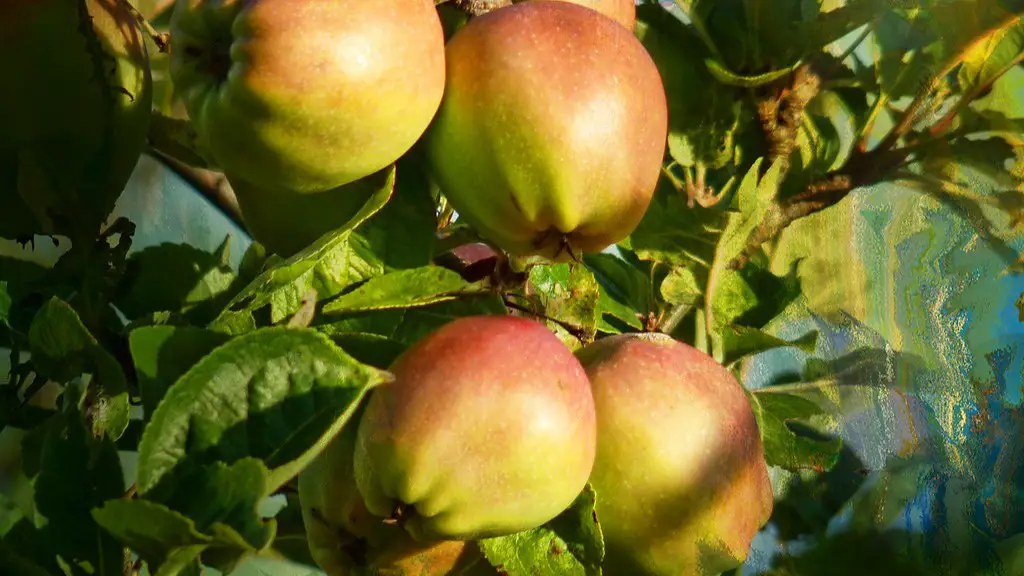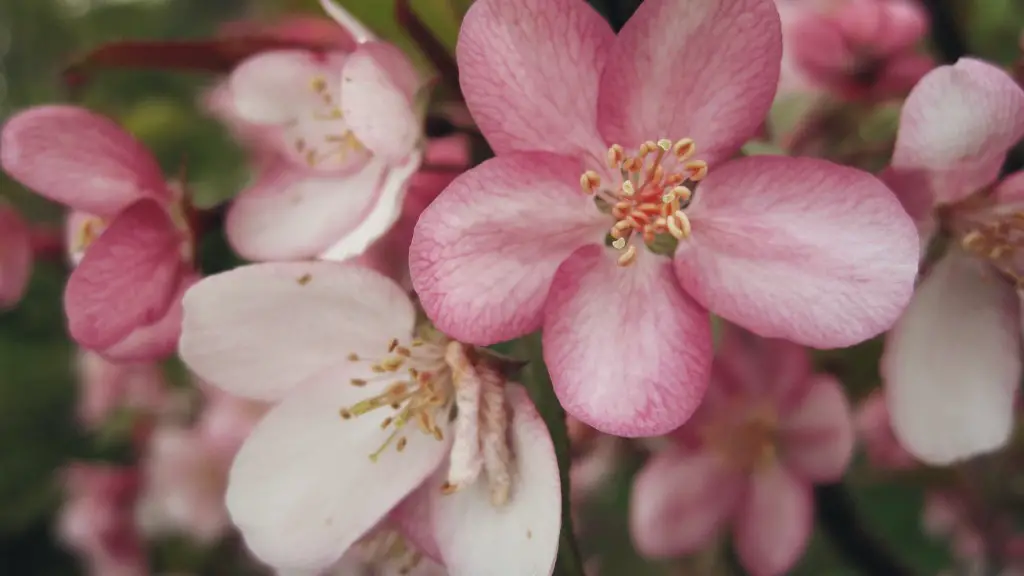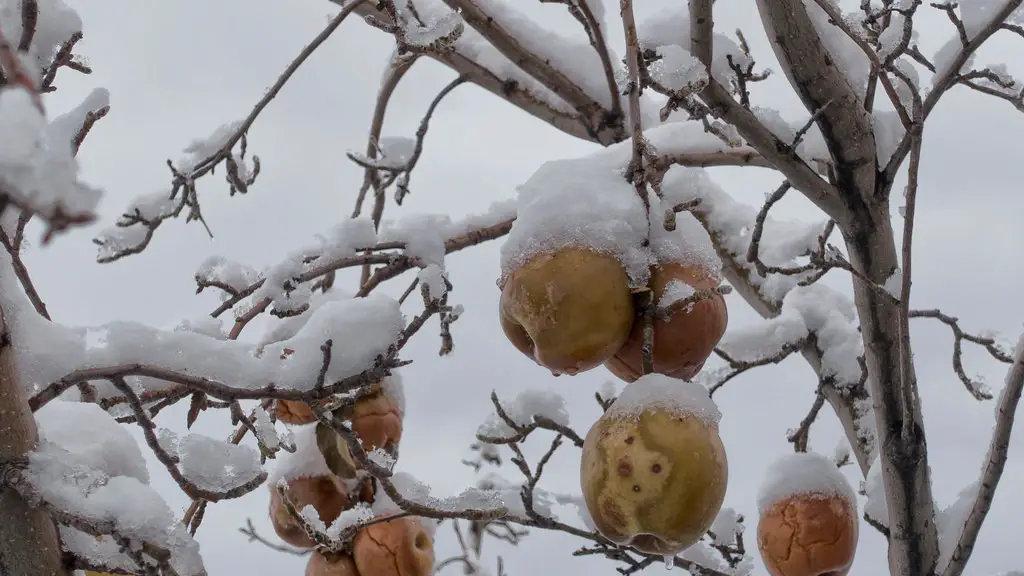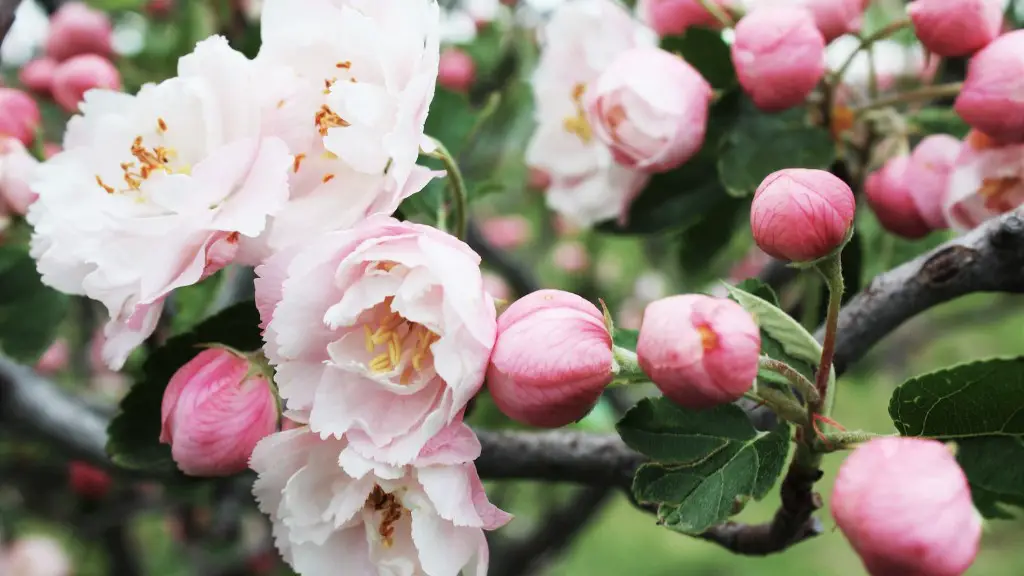The life cycle of an apple tree is both fascinating and intricate. Apple trees require pruning, fertilization and other interventions to produce quality fruit. In addition, they respond to changing seasons and weather conditions, making an understanding of the life cycle of an apple tree essential for successful apple orchards.
When apple trees are first planted, they are container-grown or grafted and planted into the soil. As these saplings grow, the root systems will help anchor and support them. Once planted, the apple trees will also need sunlight and water for photosynthesis which fuels their development.
The apple tree’s growing season typically starts in spring and continues through late fall. During this time, the tree will emerge from dormancy and grow leaves and branches. As the days lengthen and temperatures warm, apple trees will produce flowers in the late spring. Bees and other pollinators will carry pollen from one flower to another, allowing fertilization to occur.
Once fertilized, the flowers will become apples that ripen in late summer or autumn. Apples ripe for picking look layered, with a pale yellow, green and sometimes a bit of red on them. Once picked, apples can be stored, cooked, or cored and baked into pies. At this point, the life cycle of a single apple tree will pause until the next year’s cycle begins.
However, this is only the life cycle of one individual apple tree. Successful apple orchards require ongoing pruning and fertilization to maintain the health of their apple trees. Pruning helps to control the growth and shape of the tree, as well as to reduce competition between branches and limit the number of fruit produced. Fertilization in the form of nitrogen and other minerals helps to supplement the apple trees natural nutrient intake from the soil.
Apple orchards must also watch for disease and pests that could potentially affect their trees or the ripened fruit. Apple scab, fire blight, aphids and apple maggot are all common pests that can attack an apple orchard. To help remedy this, pest control measures such as regular monitoring, insecticides, and crop rotation are all helpful.
As producers of beautiful apples, healthy apple trees are essential to a successful orchard. Understanding the life cycle of an apple tree is the first step in managing an orchard and producing quality fruit.
Fertilization and Pruning
Fertilization and pruning are essential for a producing apple tree, regardless of whether its part of an orchard or a single tree. Fertilizing involves adding nitrogen and other minerals to the soil around the tree. This boosts the tree’s own nutrient intake from the soil, leading to healthier leaves and fruit. Pruning consists of removing branches or stems in order to shape the tree, reduce competition among branches, and to keep the tree from producing too much fruit or developing too quickly.
Fertilizers used by apple orchards may include chemical additives, as well as compost or manure. Chemical fertilizers can be bought at gardening supply stores, while compost and manure can often be made on-site. Pruning should typically be done in the late winter or early spring when the tree is still dormant.
With proper fertilization and pruning, an apple tree can be healthier and bear more fruit over its lifetime. Apple orchards should follow the best practices in fertilization and pruning to keep their apple trees healthy and productive.
Disease and Pest Control
Pests and diseases can wreak havoc on apple trees, reducing yields and leading to unappetizing apples. Therefore, it is important to monitor closely for any pests and diseases that can affect apples. Common pests include aphids, apple maggots, fire blight, and apple scab.
To reduce the risk of pests, apple orchards should practice good sanitation techniques, such as keeping the area around their trees free of weeds, fallen branches and other debris. Regularly harvesting unripe apples is also important, as many pests and diseases are spread by unripe fruits.
In addition, insecticides and crop rotation may be used to prevent or mitigate pest and disease infestations. It is important to note that different insecticides may have varying effects on different pests, so an orchard should research pesticides before use. Crop rotation helps to ensure that pests are less likely to attack the same apple tree year after year.
Proper disease and pest control measures can go a long way in reducing the risk of infestation and keeping an orchard’s apple trees healthy and productive.
Harvesting
Harvesting apples is a crucial final stage of the apple tree life cycle. Because apple trees produce a variety of apples, an orchard will usually harvest several times each season to allow for different harvest times for different types of apples. Late apples are usually harvested first, followed by green apples, and then finally early apples.
Careful harvesting and handling of the apples are important to ensure that the fruit arrive in good condition at the market. Therefore, apple-pickers should use harvesting bags and ladders, as well as gloves, hats, and other protective equipment. Apples should be harvested by hand, as shaking the tree can cause bruising or damage to the fruit.
Harvested apples should be immediately cooled and stored in controlled temperature to maintain freshness and prevent spoilage. Apples in storage should be monitored for signs of stem puncture, pest infestation, or disease. If any of these are found, the apples should be properly disposed of and not used in production.
Once harvested, the apple can be used in many different ways, whether its juiced, cooked, or simply eaten fresh. The life cycle of an apple tree is then complete for another year, with its apples being enjoyed by people around the world.
Seed Production
In addition to regular apple tree life cycle, apple trees can be encouraged to produce seeds. This is done by crossing two different apple varieties, which will produce a third, hybrid variety. This hybrid variety will then produce its own seeds, which can then be planted to create a new generation of apple trees.
To produce viable apples, some variety and pollination management is required. At least two different apple trees need to be planted close enough together for pollinators to transfer pollen between them. Apple trees also need to be pruned properly to ensure that the branches do not overgrow one another.
Apple orchards that specialize in seed production often go to great lengths to ensure the quality of their product. They may carefully select the apple varieties to be crossed and pollinated, as well as carefully monitor the progress of the pollination process.
Producing seeds from apples can be a difficult process, but it is essential to ensuring the next generation of apple trees. Successful seed production is key to maintaining a fruitful and productive apple orchard.
Storage
Storing apples properly for as long as possible is key for apple orchards. To do this, apples need to be harvested and cooled within a few hours of picking. Chilling temperatures can help to reduce spoilage and slow down the ripening process, allowing apples to remain in storage for longer.
Different apple varieties require different storage conditions, so the orchard should consult a specialized storage guide for their apples. Apples should not be stored with vegetables such as potatoes, as they give off ethylene gas that can cause apples to over-ripen and spoil.
Apples can be stored in wooden crates or cardboard boxes, in a cool, dry place. Apples should be regularly monitored during storage, and defective fruit should be removed as soon as possible. This can help to prevent rot or mold from spreading in the rest of the shipment.
The life cycle of an apple tree ends in harvesting and storing with the hope of having apples make it to production and eventual consumption. Understanding the life cycle of an apple tree is essential to a successful and fruitful orchard.





